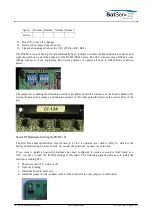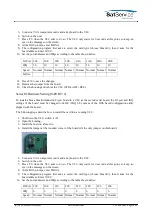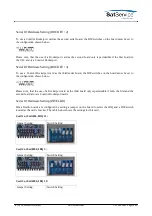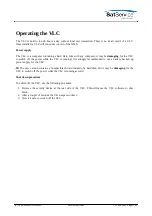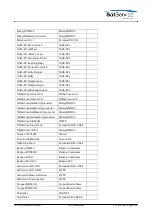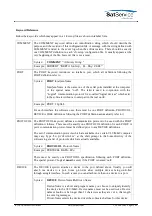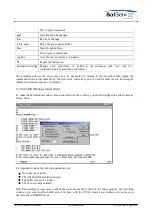
Example:
DEVICE CAM-SW IS NAIS-FP-Simple-Output
IDLE
For each port the software maintains an own 'thread' which polls the device(s) in an
endless loop. In order not to eat up all the computer's CPU time, the thread rests in every
loop cycle for a certain time. The default for this idle time is 1000 msecs.
The IDLE parameter lets you set the idle time for each port individually. Increasing the
time unburdens the CPU, but makes the software recognize state changes of the device
with some delay. You may want to set the idle time for a power meter involved on a
power control loop to 200 ms while a "door open" alarm circuit only needs to be polled
every 10 seconds.
Syntax:
IDLE n
n the idle time (msecs)
Example:
IDLE 500
vi is the standard text editor used on Unix systems. The M&C system being based on the Linux operating
system uses an enhanced version of vi, called vim (vi improved). The paragraphs below give a short
introduction how to use this text editor.
The new version contains also the Midnight Commander with an integrated editor. type mc at the
command prompt to start the file manager and type mcedit filename, where filename is the path to the file
which you want to edit, to start the editor. While running MC you can browse through the directories of the
system and manipulate files. Use the function keys F1 .. F10 or select the functions from the menu.
First of all, why to use vi? vi is known to be difficult to learn as it's concept is different as you might expect.
There are other text editors available for Linux which are easier to handle. The answer is: vi turned out to be
the only text editor program which works in a satisfying way when used in the Microsoft Windows telnet
client. If you are going to maintain and configure a sat-nms network management system, you will find it
comfortable even to do configuration jobs from your desk.
The most important difference between text editors like the 'notepad' known from the MS Windows
operating system and vi is the modal behavior of vi. This means, vi treats keystrokes in a different way,
depending on it's current mode. The two most important modes of vi are the COMMAND mode and the
INSERT mode
In COMMAND mode, each keystroke tells the editor to do something. Even plain characters are commands
rather than they are inserted into the text. The advantage of this COMMAND mode is that you can operate
the editor without any special keys arrows or function keys.
In contrast, the INSERT mode lets you enter text but no commands. You have to switch between these
modes while you are editing a text. Early versions o f vi really didn't provide any commands while in
INSERT mode. vim is much more flexible with this, e.g. you may move around the text using the cursor
keys, even if you are in INSERT mode.
The vi editor contains a extensive online help manual which you can view from within the editor. Type the
key, followed by
:h
and
. The editor splits the window and shows the online help in the upper part.
Type
:q
to remove the help again.
(C) 2020, SatService GmbH
www.satnms.com
VLC-IM-2002 Page 36/39




